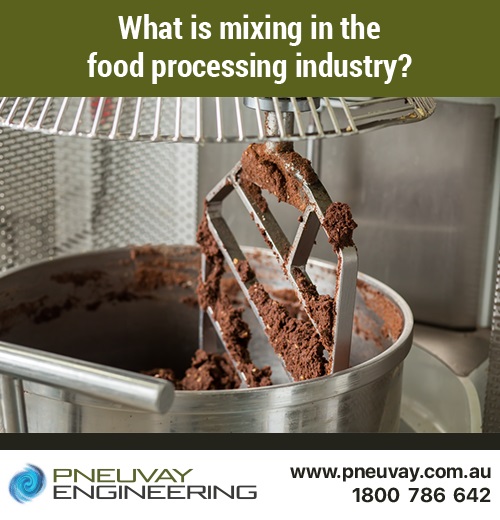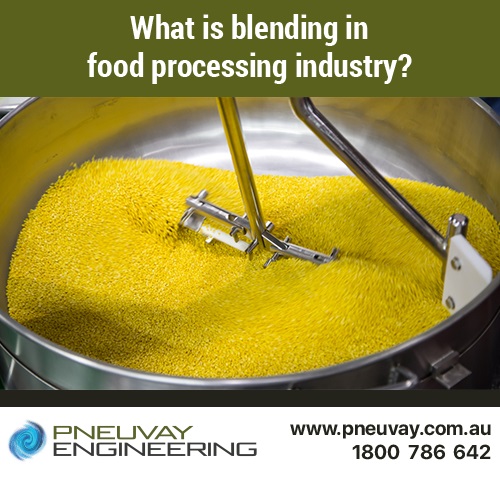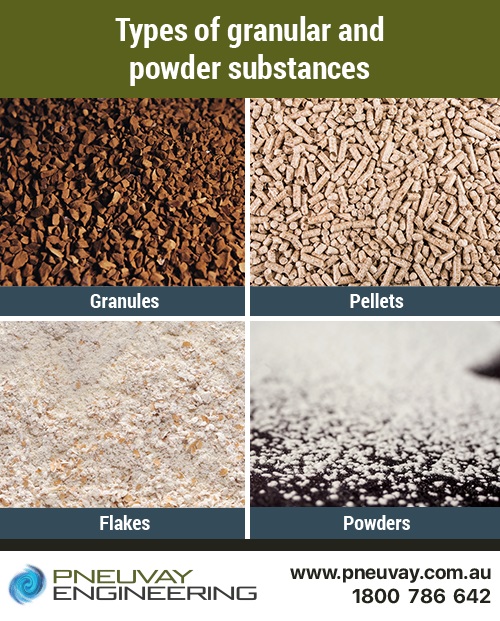See our latest projects and be updated with recent news and features
happening in the world of pneumatic conveying, materials handling
and industrial vacuum systems.
See our latest projects and be updated with recent news and features
happening in the world of pneumatic conveying, materials handling
and industrial vacuum systems.

Wednesday, March 28, 2018
In the food industry, two important processes are the blending and mixing of granules and powders. In this article we discuss the differences between mixing and blending these substances; we detail the types of granules and foods commonly mixed or blended and, finally, we provide a simple guide for developing a set of requirements when sourcing mixing and blending equipment for granular and powder food processing.
The most common uses of mixing and blending of granular and powder foods occur in:
In general, mixing and blending are terms that are often interchanged. In the food industry, however, they are considered different processes.
Mixing is when two or more substances are combined in a vigorous fashion to form a homogenous product. Mixing is often associated with combining solids with a large quantity of liquids or liquids with liquids. Examples of mixes include:
Agitation can be increased to speed up the combining process. This occurs in the processing of mixes such as:
Mixing needs to be carefully tailored to suit the product and equipment capabilities. Poor mixing can lead to surface foaming, the formation of lumps and trapping of unwanted air within the mixture.
The final mixed product either remains a liquid or becomes a semi-solid like dough, paste or cream. Mixed products are further processed by methods outside the scope of granular and powder handling.

What is mixing in the food processing industry?
Blending is when substances are combined in a gentle fashion so that they become inseparable but are not necessarily homogeneous. Blending is associated with the combining of solids (dry) with solids and solids with small amounts of liquids (wet). Poor blending of solids can lead to issues like product settling out while being transported (segregation) or the formation of wet clumps.
Simple examples of dry blends in food processing include:
A more complex case is blending starch and dried vegetables together for a soup mix.
Wet blends include having oil or other additive solutions being coated or absorbed into solids to add aroma, colouring and flavouring. Some common examples include:
The final blended product is then processed by further pneumatic conveying or powder handling methods. An example would be conveying the final blended product to silos and storage bins for packing into 1 tonne bulk or 25kg bags.

What is blending in the food processing industry?
There are several types and classes of granular and powder substances used in food manufacturing.
A granular is a dry, bulk solid substance that is made up of tiny grains or small particles. An example of a typical granular material is sugar or salt.
Extruded pieces
A class of granular is where the small particles are made up of extruded pieces. These are particles that have been formed by pushing a material through a die to give them a uniform cross-sectional profile giving them a specific shape. An example would be expanded cereals.
Flakes
Another class of granular is where the small particles are made up of flakes. These particles small, flat, very thin pieces of a material that has chipped, broken away or been peeled off a larger piece. Examples include wheat and rice flakes made from corn (maize).
Pellets
An unusual class of granular are pellets. These are small particles created by compressing an original material and are common in the manufacture of animal feeds.
Powders are a special class of granular material which is made up of very fine particles. The substance may flow when shaken or tilted but tends to form clumps when flowing. This substance is the result of pounding or grinding a specific type of food material. An example is where grain is ground to make flour.
Granular and powder substances all have specific properties including:
Particle properties
Bulk properties
These properties are influenced by fluctuations in:
It is the properties of granular and powder substances being mixed or blended that will determine the best equipment to be used.

Types of granular and powder substances
There are many granular and powder ingredients mixed or blended in food processing.
Bulk liquids that are mixed with these ingredients include water and milk.
Liquids of small volumes that are blended with bulk materials include oils and additives that provide aroma, flavor, stability or color to bulk ingredients.
We hope you will find this simple guide helpful when looking to improve or extend your granular and powder food processing plant. The guide is based on our extensive industrial experience and should be of value when developing a set of requirements for sourcing new or replacement mixing and blending equipment. Points to consider include:
When developing requirements for mixing or blending equipment, we advise contacting us for assistance to ensure correct design decisions are made from the start of the process. This will maximise the discovery of obscure factors that may affect the mixing or blending result or have detrimental impacts on subsequent stages of food processing.
Information gathered in the requirements guide can then be used to determine if you need a custom solution designed and manufactured or have an existing best fit product sourced.
Once the solution is confirmed, we can then:
Our recent join with Pneu Powders Systems (the Asia-Pacific industry leader) has provided us a greatly expanded our capability in food processing. Our base of knowledge, expertise and experience in the material handling of granular and powder products in food processing has been significantly increased beyond pneumatic conveying. We can now provide new or refurbished food processing plants, with purpose-built components optimised for granules, powders and extruded piece handling.
We cover all relevant stages within granular and powder products in food processing including:
We currently provide complete fully integrated turnkey pneumatic conveying and powder handling solutions in the Aviation, Mining, Manufacturing and Transport industries. We now offer the same level of specialisation in Food Processing.
For further information, contact us online or call us on 1300721458
Get social with us and see the latest news items from:
Vortex Global is proud to appoint Pneuvay Engineering as its sole agent for New Zealand.
Read on to find out how this set a new standard for bulk material handling solution for Australia and New Zealand.
Pipe and Tube Compression Couplings
Industrial Dust Collectors Systems
Dust Collectors Filters, Cartridges and Bags
Pneuvay Engineering Pty Ltd - Copyright 2020
ABN 49 006 027 541
